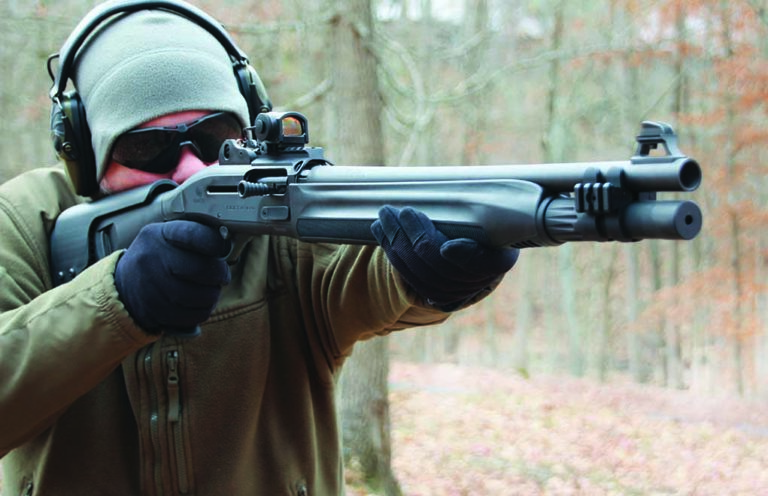
Bad shotgun habits abound, nine times out of 10 precipitated by a gun's recoil.
What are the three ways to reduce a shotgun's recoil:
- Increase the weight of the gun.
- Shoot lighter loads with less velocity.
- Insert some form of compensation between the gun and your shoulder.
Without a doubt, the greatest foe of our shooting enjoyment is the old demon recoil. Recoil — and the resulting “kick” — is the root of most all evil in our shooting habits, whether we flinch, jerk triggers or stop our gun swing as we try to compensate for getting hammered when the gun goes boom. Recoil is the greatest obstacle of novice and first-time shooters even getting introduced to the sport. Ask any new shooter as they line up to try the shotgun, and the thing they’re universally most worried about is getting kicked. Hard.
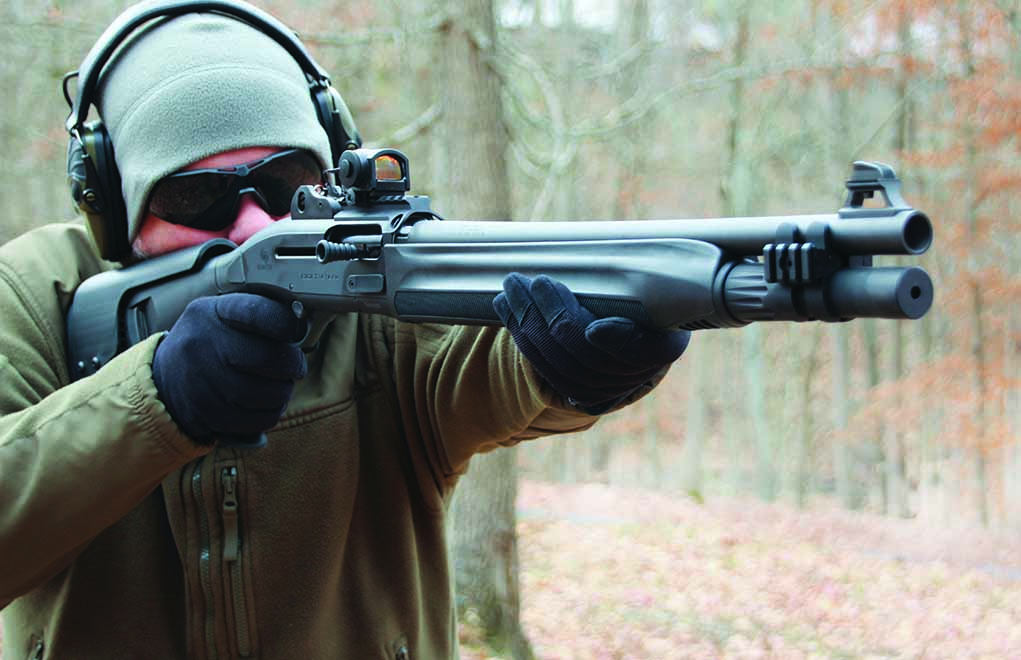
Back in the alleged good old days, it was common practice to hand a kid an ill-fitting shotgun and laugh when it kicked him like an army mule. I would like to say this practice has gone by the wayside, but I still hear about it and see it on various embarrassing videos. There are legions of shooters who will carry bad habits to the grave, most of which are associated with recoil. The point is, shooting a shotgun should be fun — and that means we need to do all we can to control recoil.
There are basically only three ways to reduce recoil in a shotgun: The first is to simply increase the weight of the gun. A heavier shotgun absorbs more of the recoil than a light one. This is why field guns used for hunting are heavier than competition shotguns for trap or sporting clays — hunting loads kick harder. But, you will carry the field gun more than you will shoot it, and just the opposite is true for a competition gun.
Next, you can shoot lighter loads with less velocity. Reducing the amount of powder and lead in the shell will help greatly with recoil reduction. (Newton’s Third Law of Motion, opposite and equal reactions, remember?)
Last, you can insert some form of compensation between the gun and your shoulder. A recoil pad, a compressible device in the stock or a gas-operated action in the shotgun that disperses some of the gases expelled, all lessen recoil.
Find Out More: The Science of Recoil
Soft-Shooting Gas Guns
Gas-operated actions on shotguns can take several forms, but all of them use some type of piston which, by the pressure of the fired round, moves the action of the weapon. In this way the action is opened, the bolt moves back, the empty is extracted and the new round placed in the chamber. Boom, boom, boom.
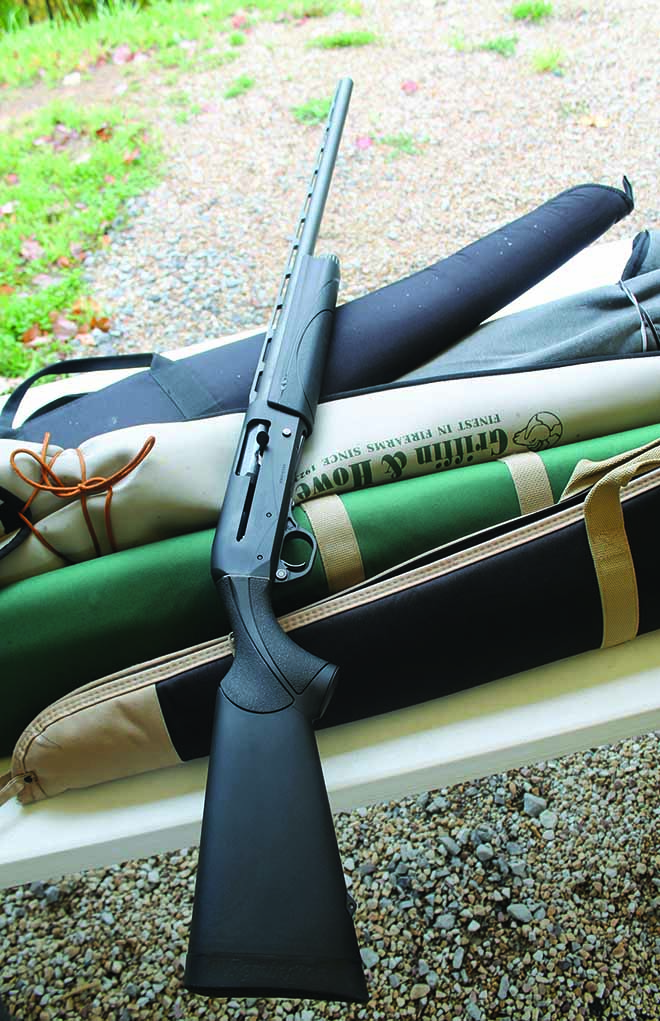
Looking back, 1963 was definitely the watershed year for gas-operated shotguns because Remington introduced the Model 1100. The 1100 followed the Remington Model 58 and 858, and it replaced them as it became the first successful (and reliable) auto-loading gas-driven shotgun. Soon after coming onto the scene, the 1100 became the darling of trap shooters, skeet shooters and hunters as well.
Much of what made the 1100 so successful was that its gas-driven action took some of the sting out of shooting, and it could run different kinds of ammo — such as 2¾- and 3-inch shotshells in the Magnum models. This happened to be foreshadowing of the appearance of the VersaMax years later by Remington.
The Model 1100 bleeds off some of the gasses from the fired shell and uses part of them to work the action as any auto-loader gas gun does. The real genius in the 1100 action is that it’s basically a gas-powered Model 870 pump gun. The ports, which bleed off excess gas, are found near the front of the forearm. The gas from the fired round is used to work the action and move the action sleeve, which connects to the bolt carrier and ejects the empty casing. A new shell is released from the magazine: This trips the carrier release, and as the action spring in the stock pushes the bolt forward, the bolt grabs the new round and pushes it into the chamber.
Read Also: Gun Review: Classic Remington Model 1100
All of this sounds fairly easy on paper, but as you might suspect, the sequence has to be finely tuned to function properly, and the Remington engineers made sure they had it right before they unveiled the 1100. Like all gas-powered actions, the Model 1100 has one big nemesis: The accumulation of burned powder and fouling from the fired shells. Most 1100 shooters will tell you that the gun needs to be stripped down and cleaned after 200 rounds or so.
Gas-powered shotguns did not change much after the Model 1100 for years. In 2010, Remington brought a new operation system to the shotgun world: Remington revamped a model for a gas-powered shotgun that was first created in Italy and put to use in the Benelli M4. Remington engineers worked their magic on this concept and gave us the VersaPort system.
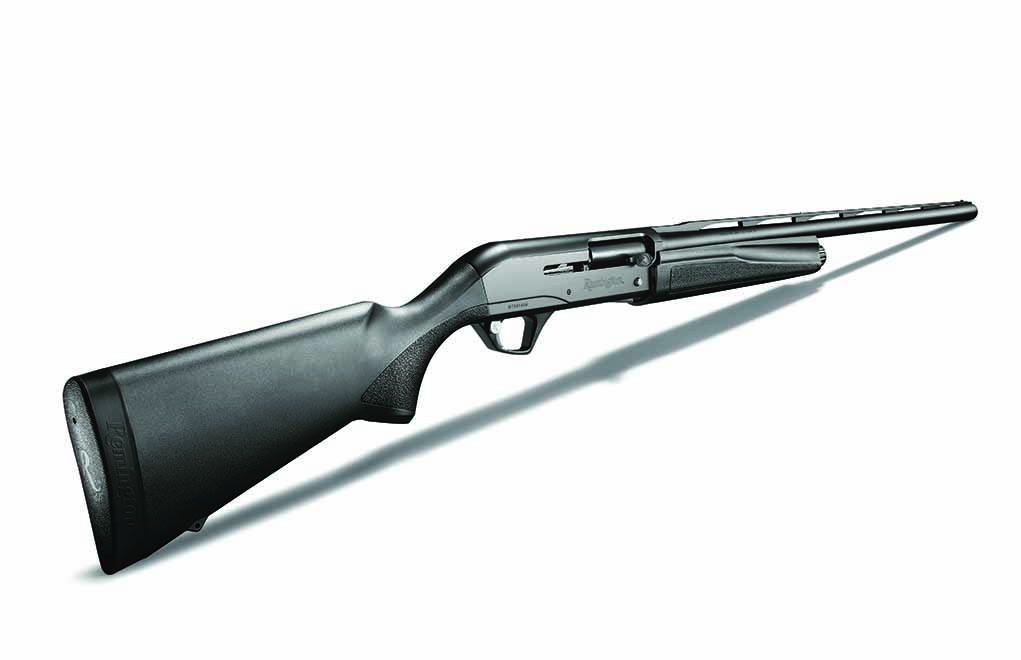
energy created over a longer period
of time, reducing felt recoil.
The VersaPort system was revolutionary in a couple different ways. First, it used the length of the individual shell being fired to regulate how much of the expelled gases to be used. With a 2¾-inch shell in the chamber, all seven of the small ports are exposed — and these ports put the expelled gas into two compartments that hold the VersaPort pistons, which work the action of the shotgun. With a 3-inch round, four of the ports are utilized. And with a 3½-inch shell, only three ports are uncovered.
Another major breakthrough of the VersaPort system is the concept of how quickly the gas from the fired shell is captured and used. Firearms engineers have long known that the faster the gases are captured and used to function the shotgun — or ported out of the system — the less recoil will be transferred to the shooter.
“The impulse (impulse = force x time) created by the ignition of a given shell is the same in any shotgun,” said Andy Haskins, a Research and Development Engineer at Remington Arms company. “The VersaPort system utilizes the pressure from a fired shell sooner than other gas systems by venting it through the orifice holes in the chamber. This enables the V3 and Versa Max to convert the energy created by the gas into work to drive the system sooner … and over a longer period of time. By venting the gas earlier, combined with the Supercell recoil pad, we’re able spread out the energy created by the recoil event (impulse) over a longer period of time, therefore reducing the peak force felt by the shooter.”
Conventional gas-operated systems before VersaPort located the gas ports as much as 10 inches in front of the chamber; the VersaPort utilizes the gases almost immediately. The twin pistons below the chamber move very little by using the force of the expelled gas, but the bolt is moved backward and the fired casing is ejected and a new round is chambered. The twin piston system eliminated the use of different O-rings, metal adjustment rings and other items that are sometimes a headache to deal with.
Facing Inertia-Driven Recoil
No doubt you’ve heard more about a gun inventor from Utah named John Moses Browning than you have about Danish gunmaker Christer Sjörgren. In 1903, both unveiled what would become iconic recoil operated shotgun actions. Browning gave us the Automatic 5, with what became known as the long recoil system. Sjörgren’s shotgun harnessed the force of inertia and used it to move the bolt backward as it pushed against a spring. This motion ejects the fired shell and loads a fresh round as the bolt returns to battery for firing.
Find Out More: Auto-5: Those Hammerin’ Humpbacks
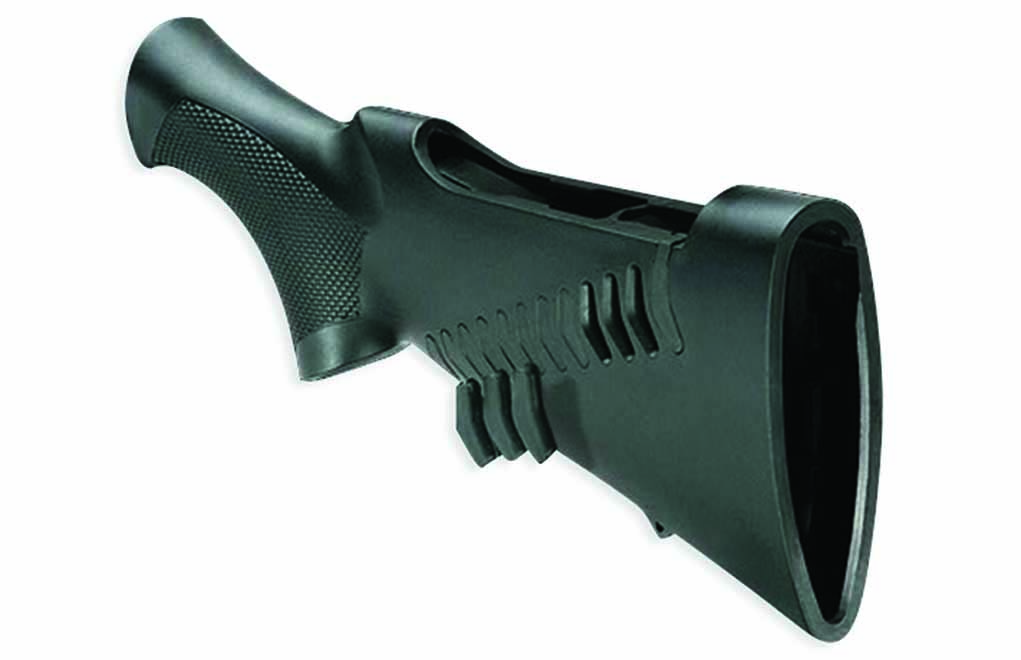
So, the inertia gun was born — but the idea remained largely dormant until it was resurrected by Benelli in the late 1960s. Benelli embraced the inertia system and incorporated it in its line of semi-auto shotguns, including its iconic Super Black Eagle. It should come as no surprise that other shotgun-focused companies — Franchi and Stoeger — also offer inertia shotguns.
Here’s the deal on inertia-driven shotguns: Most have less moving parts than the gas-operated guns, there are no pistons and chambers to capture and route the expelled gases, and with less parts these guns are almost always lighter. The inertia gun uses the force of the gas to move the action of the gun rearward — it doesn’t vent any of it off to lessen recoil. Inertia guns are generally considered less finicky, easier to clean and will operate under severe conditions. The downside is that they’re also known to kick harder than gas-operated shotguns.
So, how do we handle the old demon recoil in inertia guns?
The folks at Benelli knew long ago that they’d have to deal with the recoil associated with inertia guns. Currently, Benelli employs two systems for recoil control in semi-autos: Wood-stocked shotguns use the Progressive Comfort System, and synthetic-stocked shotguns have the ComforTech technology.
The Progressive Comfort recoil-reduction system incorporates three sets of patented interlocking flexible buffers that absorb recoil at different stages, dependent on the strength of the shotshell’s load. Looking at the inside of a Benelli Ethos shotgun stock, you can see the polymer system, which includes three sets of fingers. These three sets of fingers each have a different elasticity, and the load used determines which sets of fingers are utilized for maximum recoil reduction. The first set of fingers is very flexible for light loads, the second set a bit stiffer for field loads and the third set is optimized for heavy magnum loads.
Learn More: Benelli Ethos 28 Gauge Shotgun
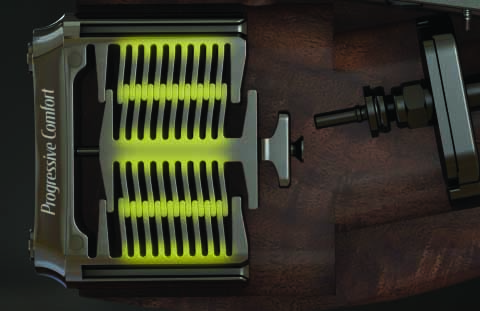
ComforTech recoil systems on Benelli synthetic-stocked guns, such as the company’s flagship Super Black Eagle 3 shotgun, deal with recoil in a different manner. The stock is divided by 24 synthetic, recoil-absorbing chevrons. The chevrons are arranged diagonally from the heel of the buttstock to a point just behind the grip. The stock is designed so the exterior shell flexes outward to further dampen recoil. Together with the ComforTech Plus recoil pad, this design spreads the peak force of recoil over a longer period of time.
A nice addition to the Benelli line is the ComforTech Plus Comb Pad. Part of what we associate with the “kick” of a shotgun is the pounding we may get from the comb of the stock on your cheek. This pad cushions the cheek during recoil and provides a slick surface that allows your cheek to slide along the comb during recoil. This eliminates frictional resistance and insulates your face from shock and vibration.
Remember: The “kick” you feel when shooting a shotgun — known as felt recoil — is subjective. How much you think a shotgun kicks may not be the same for me or your shooting buddy. How much a recoil pad or a certain stock design helps with demon recoil may be like saying who the prettiest girl in your senior class was — everyone may not agree.
So, with that in mind, find a system that works well for you and your shooting style: Your comfort level and overall accuracy will greatly improve.
This article originally appeared in the 2018 Shooting Is Fun issue of Gun Digest the Magazine.

Next Step: Get your FREE Printable Target Pack
Enhance your shooting precision with our 62 MOA Targets, perfect for rifles and handguns. Crafted in collaboration with Storm Tactical for accuracy and versatility.
Subscribe to the Gun Digest email newsletter and get your downloadable target pack sent straight to your inbox. Stay updated with the latest firearms info in the industry.

![Best Concealed Carry Guns In 2025 [Field Tested] Wilson Combat EDC X9S 1](https://gundigest.com/wp-content/uploads/Wilson-Combat-EDC-X9S-1-324x160.jpg)


![Best 9mm Carbine: Affordable PCCs [Tested] Ruger Carbine Shooting](https://gundigest.com/wp-content/uploads/Ruger-Carbine-Shooting-100x70.jpg)
![Best AR-15: Top Options Available Today [Field Tested] Harrington and Richardson PSA XM177E2 feature](https://gundigest.com/wp-content/uploads/Harrington-and-Richardson-PSA-XM177E2-feature-100x70.jpg)
